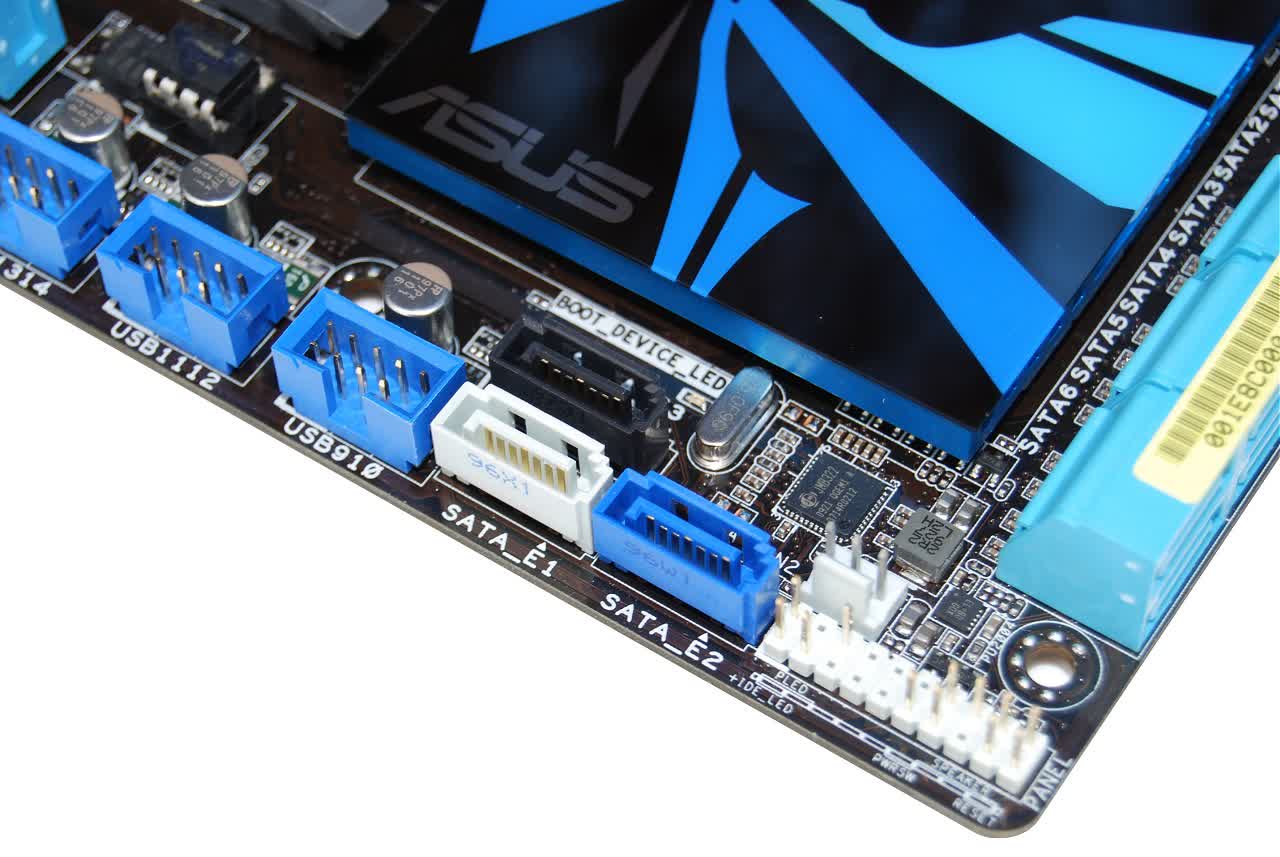Layout & Design
Over the years we have come to appreciate how well Asus motherboards are laid out, and the P7P55D Deluxe is no exception with no discernible flaws to speak of. We imagine building a well constructed P55 motherboard was hardly a challenge for them given the single chip approach.

Because the memory controller and PCI Express lanes are housed within the LGA1156 processor, there is no need for the chipset to be positioned in the middle of the board. This gives more ample room to play with components, and allowed Asus to go a little nutty with their power delivery system.

The P7P55D Deluxe features what Asus calls their groundbreaking 16+3 phase VRM design, which uses 16-phase for vCore and an additional 3-phase for the on-die memory controller. They claim this provides the highest level of power efficiency and in turn generates less heat to effectively enhance overclocking capabilities.

Using high quality power components such as low RDS (on) MOSFETs, Ferrite core chokes with lower hysteresis loss, and 100% Japanese-made high quality conductive polymer capacitors, the Asus 16+3 phase VRM design is said to ensure longer component life and minimum power loss.
Furthermore Asus has included another microchip called "T.Probe" which detects and balances power phase loads and temperatures in real-time.
Unfortunately we are unable to accurately measure the effects of their 16+3 phase VRM or T.Probe features, so it is hard to say if they are important additions or just marketing fluff. That said, if the P7P55D Deluxe overclocks like a champion, we will happily believe that these features had something to do with it.

Cooling the 16+3 phase VRM are a pair of passively cooled heatsinks that are linked together via a single heat-pipe. Then in the bottom right hand corner of the P7P55D Deluxe is a flat heatsink that measures just 6.5cm wide, 8cm long and 0.5cm tall. This flat heatsink is designed to cool the Intel P55 chipset, which clearly generates very little heat. So when compared to many other recently released motherboards, the cooling setup featured on the P7P55D Deluxe may seem underdone.
Asus also came up with a simple solution that solved a problem that has plagued motherboards for years: DIMM slots placed too close to the primary PCI Express slot making it impossible to install memory modules without first removing the graphics card. This can be a pain staking process for those using larger graphics cards in smaller cases, as they can be quite awkward to remove.


Asus has removed the DIMM slot clips from the bottom of the slots, keeping them only at the top where they are easily accessible. This means that the user needs only to use the top clips to remove and install memory modules, eliminating the annoying DIMM/PCIe conflict.

Another annoying conflict found on many motherboards arises when using long graphics cards and trying to access SATA ports. By mounting the SATA ports at a 90-degree angle it is possible to use all six SATA ports, even if two high-end graphics cards are installed.
